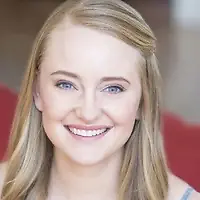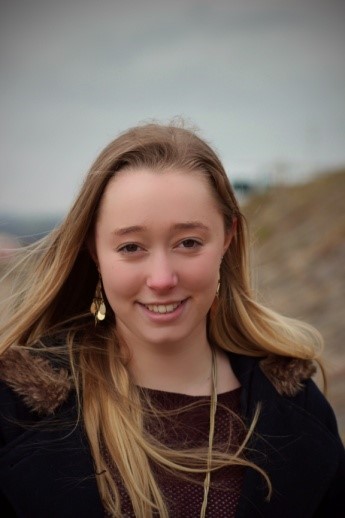July 23, 2018
 by Jordan Wahl / July 23, 2018
by Jordan Wahl / July 23, 2018

So, you’re hosting the event of the century. You’ve planned it down to every last detail, and you have all of your PR Materials, but one thing keeps crossing your mind: How will you get everyone to come?
Surely you have an event marketing plan in place, but your communication strategy should also come into play if you want to reach your target audience.
That’s where your answer lies: a press release.
You heard me. A press release. Something as simple as a document summing up the details of your event can spread your message far and wide.
So, how do you write a press release for an event?
That’s what we’re here to cover.
In this article I’ll give you a step-by-step walkthrough on how to write a press release for your event, as well as how to get the press release coverage that you want.
Let’s start with a refresher of what a press release is and why writing one for your event is important.
For reference, here’s the formal definition:
Noun
An official statement released by organizations that reports events, changes in circumstances, or anything else ostensibly newsworthy.
Great. But why are they important?
Press releases are meant to pique the interest of journalists and media outlets. And, if you do it right, those journalists and media outlets just might do some marketing for you by sharing your newsworthy message with the public. In your case, your event details.
Given that, writing a press release for your event is a great promotional tool to get your word out, and fast.
So, let’s jump into how to write the perfect press release to get your event covered.
Public relations (PR) people are used to reading press releases quick. So it’s important to use basic press release format in order for them to find the information they want easily and quickly. Also be sure to check out press release tips from PR professionals to make your event even better.
When it comes down to it, all press release are similar. They have many of the same key components, but depending on what they’re for, you might include (or exclude) different elements.
An event press release is used to promote a newsworthy event or a press conference that a company is hosting or sponsoring; it should include all details of the celebration, fundraiser, conference, etc. that you are hosting, as well as cover what attendees will benefit from.
Your event press release will have several components. Here’s a breakdown on what it should include:
Now let's talk about each component a little more in depth.
If you want people to attend your event, you’ve got to let them know before, right? This is where your release date comes in to play. By specifying your release date, you’re telling media outlets when you want the information to go public.
There are two scenarios for the timing of your press release:
1. Immediate release – In the case that the event is nearing, you'll want to distribute the press release as soon as possible to ensure the information reaches your target audience in time.
Tip: Always include FOR IMMEDIATE RELEASE (yes, in all caps) in the header to let media outlets know that you’re ready to publicize the information right away.
2. Time limited – In the case that the event is set for a future date, you’ll want to wait to distribute your press release until a specific time closer to when the event is actually happening.
Tip: To prevent media outlets from sharing your information too early, issue a media embargo. To do this, specify in your release date by writing “embargoed until [date]” in the header.
You can use either type of release date in this case, but as far as press releases for events go, I’d recommend preparing your press release for immediate release around the time of your event. Embargoing press releases are usually reserved for big reveals for things like C-level hires or new product offers.
Tip: Remember, you want to give the media and your audience enough notice so they can plan accordingly. This means don’t wait until a few days before the event to publicize the event details.
Your heading is the first thing people will see. With that being said, it better say something that stops people from scrolling right past it.
If you get your heading right, it should accomplish a couple things.
For starters, it should hook the reader in enough to make them want to keep reading for more. Consider something catchy and strong that will get them excited to learn more about your event.
Tip: If you’ve done keyword research (as you should have), incorporate them here. Search engine optimization (SEO) is important for all online media, especially if you want to increase the chances of your press release being seen by your targeted attendees.
Next, it should include important event details, but not too many details. For example, you can add the name and theme of your event, but leave it at that. The headline should be short and to the point so that you can communicate the rest in detail throughout your press release.
Your subheading should give more depth to your heading. However, you still want to be careful not to reveal too many event details here; you just want to make readers curious as to what the event entails. Treat it like a little summary.
Your heading will get journalists to find your press release, but your subheading should move them to the body of your press release for the full message.
Tip: Use title case in your heading, but sentence case in your subheading.
Ever heard of “the five W’s”? Well, your dateline will include the most important (in my opinion) two of the five: the when and where of your event. Positioned at the beginning before your lead paragraph, your date and location should be in bold text, with the location spelled out in capital letters.
Tip: Your press release will most likely be in Associated Press (AP) style. So, when it comes to the location of your event, some cities are standalone, which means you don't need to specify a state afterward. Think CHICAGO or SAN FRANCISCO. Others require a state abbreviation, like SACRAMENTO, Calif. or MEMPHIS, Tenn. Here’s a quick reference guide to help
Now, this portion of your press release is where you reveal all the details.
Lead paragraph
Your lead paragraph is the paragraph that directly follows the dateline. It should touch on the remaining three of the five W’s: who, what, and why? Treat this like a summary. If one reads the lead paragraph, will they have all the important details of the event? Save the detailed descriptions for the body paragraphs.
The body paragraphs should be used to communicate your core message. In other words, tell people everything they need to know about your event and why they should attend.
These paragraphs should be used to talk more about the event specifics. Address the audience you’re targeting, guest speakers, if any, and the benefits attendees will get from coming.
By writing a press release, you’re affirming that your event is newsworthy, so make sure to tell readers everything they need to hear to believe that.
Tip: Include quotes. They’re a great way to add emotion to the press release, which is something that gets people excited about attending your event.
The boilerplate follows the body of the press release and is your standard “About Us” paragraph. In your boilerplate you should include a quick background on your company, as well as things like:
Your boilerplate will be used in all of your press releases, so you only have to write it once! Be sure to update it as necessary for consistency, especially if you have numbers like revenue, employee count, etc., to remain current.
Be sure not to forget contact information! This is an easy step to overlook, but it’s crucial that you don’t. Include a name, title, phone number, and email address as a point of contact from your company. This way, the media can easily reach you regarding any questions or more further information.
Once you’ve included all of the information above, you’re ready to sign off. Do this by ending your press release with three pound signs (###). This tells readers they’ve reached the end of your document.
Now that you’ve written the press release for your event, it’s time to distribute it! Having a solid distribution plan to reach the media with your press release should be worked into your event planning. In order to maximize reach, plan ahead by determining exactly who you want to reach and how you want to reach them.
Sure, you could upload your press release to newswires and hope for the best, but I wouldn’t recommend it. You’ve spent a lot of time and energy planning your event, so the last thing you want is a poor turnout. To combat this, build a list of contacts that you want to reach out to with the information. This includes news any news outlets, journalists, bloggers, and other members of the media.
When it comes to building your media list, you’ll want to assess your target audience and figure out how to best reach it. To do this, research to make sure you’re targeting media outlets and journalists that frequently cover the topic you’re pitching. Simply putting together a list of unrelated media outlets won’t do you any good. With that being said, spend time to build a list of reputable, relevant outlets. It’ll increase your chances of securing the coverage you want.
Now that you’ve spent a little time building a target media list, the actual outreach process will be that much easier. If you actually want the coverage from those on your list, however, you’ll have to do some outreach. Sorry to say, but a simple “Hi there, will you cover my press release please?” won’t get the job done. What will? Well let me tell you in a few easy steps:
Start by writing a basic pitch; something informative, but concise. I’d recommend four-to-six sentences here. You’ll want to leave space to explain your story – if your pitch is too long, the reporter won’t give it the attention you want.
What should your pitch include? Give them the who, what, when, where, and why as well as the location and time of your event, and add any other critical or newsworthy details that’ll sell them. Heads up, this is your selling point, so include the message you find most important.
Your pitch could be awesome, but if your subject line doesn’t get the email opened, no one will read it. Reporters are receiving dozens of pitches every single day, if not more. So give them a reason to open and read yours.
Your subject line should be short, compelling, and lead with the most important part of your story. Focus on the selling point, and build your subject line around that.
Tip: DO NOT begin your subject line with “press release,” “pitch,” or “story idea.” Reporters will see right through this. So don’t even try.
Now that you’ve got your pitch and subject line, personalize the email to the journalist or media outlet you’re sending it to. Avoid sending a mass email to your media list; you should spend time composing a unique email to every reporter on your list.
Some things to consider:
When it comes to actually sending the email, timing is everything. Reporters need time to turnover a story, sometimes a day or sometimes a week. So be sure to send your pitch before you expect the article to run.
If you don’t hear anything back after a day or two, consider sending a follow-up email – but that means one. Hounding a reporter risks hurting your professional relationship and decreases your chance of coverage.
Realize that not every pitch you send will end in a story, but with a targeted list and personalized pitch, you’ll have a better chance of getting the coverage you want.
Event Promotion tip: Use Facebook marketing by creating a Facebook event page to promote your event. On the page include event details, attach your press release, and provide a link to your website to register for the event. Also consider posting your event on platforms like Meetup and Eventbrite; a great way to make sure people are seeing what it is and when it’s happening. Social media marketing is free and easy, so use your resources to get the word out about your event.
There you go. The last detail of your event is officially figured out.
You now have everything you need to not only write the perfect press release for your event, but also how to form a distribution plan that gets the coverage you want.
If you follow this format and the press release distribution plan, you’ll be on track to hosting the event of the century, just like you planned it.
Are you the public relations specialist for an influencer or music artist? Learn how to make the perfect media kit and rockstar electronic press kit (EPK) to improve your PR strategy.
Jordan Wahl is a former content manager at G2. She holds a BBA in Marketing from the University of Wisconsin-Whitewater. She loves anything that puts her in her creative space. including writing, art, and music.
You have poured your heart and soul into organizing your trade show booth display.
 by Daniela Turcanu
by Daniela Turcanu
Oh, the excitement of events. The thrill that today holds something different.
 by Kristen McCabe
by Kristen McCabe
Events are a great way to network, but often we struggle to keep in contact with the people...
 by Tesni Patching
by Tesni Patching
You have poured your heart and soul into organizing your trade show booth display.
 by Daniela Turcanu
by Daniela Turcanu
Oh, the excitement of events. The thrill that today holds something different.
 by Kristen McCabe
by Kristen McCabe


